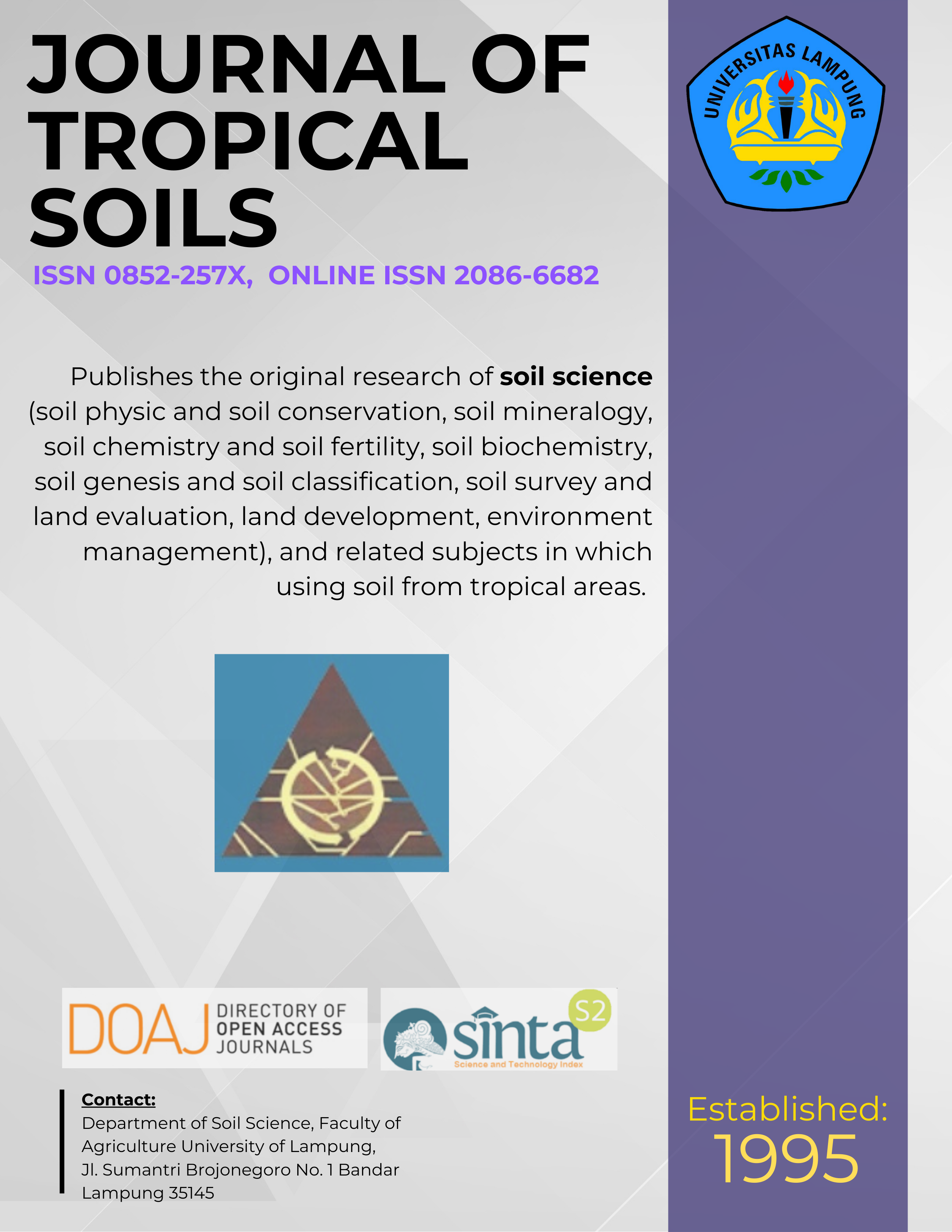Loss of Soil Organic Matter, Lignocellulose and Microbial Population in Oil Palm Plantations Located at Different Slopes
Main Article Content
Abstract
Loss of soil organic matter can be caused by erosion triggered by soil compaction and high rainfall. The aims of the study were to determine (1) the loss of soil organic matter, lignocellulose, and soil microbial population due to erosion and (2) the contribution of organic matter from oil palm fronds. In the current study, the erosion plots were built on the accessible inter-row (gawangan hidup) and inaccessible inter-row (gawangan mati) of oil palm plantations located at the slope of 6-10% and >10%. Soil organic matter, lignin, cellulose, and hemicellulose contents and total soil microbial populations were measured in the sediments collected from the erosion plots. The results showed that the loss of organic matter was higher in the accessible inter-row than that in the inaccessible inter-row. The addition of lignin, cellulose, and hemicellulose from oil palm fronds into the soil are 2.06 Mg ha-1 yr-1, 1.13 Mg ha-1 yr-1 and 1.02 Mg ha-1 yr-1, respectively. Total bacterial population in the sediments taken from the accessible inter-row was higher than that from the inaccessible inter-row, while the total fungal population in the sediments from the inaccessible inter-row was higher than that from the accessible inter-row.
Â
Â
Downloads
Article Details
Section
License for Authors
Authors who publish with this journal agree to the following terms:
- Authors retain copyright and grant the journal right of first publication with the work simultaneously licensed under a Creative Commons Attribution License that allows others to share the work with an acknowledgement of the work's authorship and initial publication in this journal.
- Authors are able to enter into separate, additional contractual arrangements for the non-exclusive distribution of the journal's published version of the work (e.g., post it to an institutional repository or publish it in a book), with an acknowledgement of its initial publication in this journal.
- Authors are permitted and encouraged to post their work online (e.g., in institutional repositories or on their website) prior to and during the submission process, as it can lead to productive exchanges, as well as earlier and greater citation of published work (See The Effect of Open Access).
License for Regular Users
Other regular users who want to cite, distribute, remix, tweak, and build upon author’s works, even for commercial purposes, should acknowledge the work’s authorship and initial publication in this journal, licensed under a Creative Commons Attribution License.

